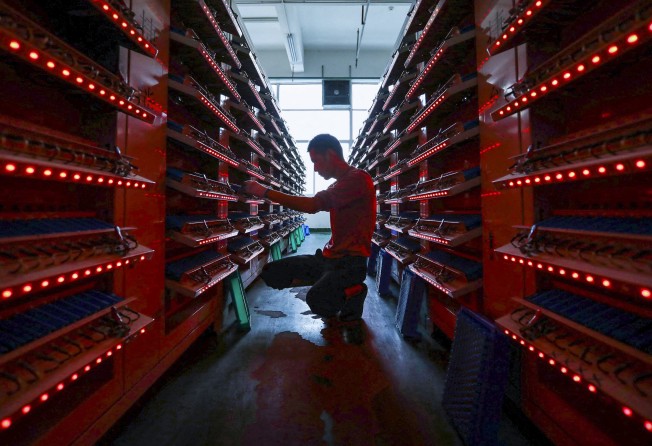
01:08
China’s largest shipment of electric vehicles sets sail from Shanghai port

Chinese scientists have developed a new technology that could triple the lifespan of a traditional lithium-ion battery and reduce its risk of catching fire.
The technology, which replaces the battery’s chemical solution with a new substance of gel-like consistency, could be scaled up to find immediate application in China’s booming electric vehicles industry, the researchers said.
Details of the study, led by Professor Yu Le and Associate Professor Li Nianwu at the Beijing University of Chemical Technology, were revealed in the peer-reviewed journal Advanced Functional Materials last week.
As battery capacity declines with repeated charging and discharging, a key indicator of its service life is capacity retention – calculated as the ratio of discharge capacity to initial discharge capacity after a certain cycle.
The researchers conducted a series of tests to measure the retention performance of the new battery.
“We conducted 100 per cent depth of discharge (DoD) with the battery. The process is actually harmful to the life-cycle of a battery, but it’s efficient in exposing its problems,” Li said.
“After 300 cycles of charge and discharge with 100 per cent DoD, our battery remained at 92 per cent capacity, whereas [traditional] batteries with bare lithium anode and liquid electrolytes remain at only 30 per cent,” he explained.
This achievement is encouraging, according to the researchers. It indicates the battery would have a considerably longer lifespan than those made with state-of-the-art technology.
The battery could be applied to industrial scenarios such as EV batteries or drones, to extend their service life, they said in their journal paper.
“Batteries in electric vehicles are combinations of hundreds of battery cells that are similar to our experimental model. We use a thicker layer of gel in the model to enhance battery performance. This may be too thick for engineering design, but it could be solved,” he said.
Lithium batteries are widely used in electronics, electric vehicles and energy storage systems for their high energy-density and capacity. But the lithium metal anode is active in its natural state and might react with the traditional chemical solution known as liquid electrolytes, leading to efficiency loss and safety issues.
Professor Yu and Li developed gel polymer electrolytes (GPEs), a semi-solid or semi-liquid material, as a new kind of filling for lithium batteries.
Traditional liquid solutions have the advantage of high conductivity, which means they transfer lithium ions faster. Solid polymer electrolytes, on the other hand, offer higher flexibility and better fire security.
GPEs are at an intermediate state and so combine their advantages in conductivity and safety, according to the researchers.
GPEs are made up of nano-sized silica and nanoparticles that serve as inorganic fillers, where a nanofibre works as a supporting substrate for the nanoparticles. The researchers also used liquid electrolyte to fill in the vacant space between pores and thus formed a jellylike electrolyte.

The nanosilica and nanoparticles can increase conductivity because they stimulate the movement of electrically charged ions in the lithium and the chemicals. The sub-nanometre porous structure can further increase the freedom of movement of the lithium ions, the scientists said.
The nanoparticles also enhance fire safety of GPEs because they are not flammable by nature.
And the nanofibres, which are porous, support and increase the flexibility of the internal structure of the battery.
All these features give the novel electrolyte extra stability and performance, according to the researchers.
“China is taking the lead in the development of high energy-density batteries, companies like BYD Co and Contemporary Amperex Technology are doing a great job in this area. But battery explosion and safety issues remain a global concern,” Li said.
“Many researchers are solving the problem in different tracks and provide various options, including replacing the electrolytes with solid ceramic or nanocomposite materials.
“Our gel polymer electrolytes represent one option.”